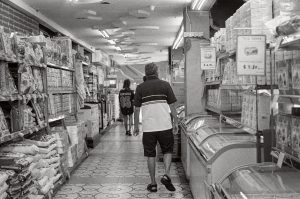Photography by Khaliq Masuri.
I have a habit: Whenever I’m early to meet a friend, have a window in between appointments, or basically find myself out and about with nothing to do, I go to the supermarket.
I never have to plan this, or even actively decide on it; it happens essentially on autopilot. If I’m in Vivocity, I’ll go to Giant. If I’m around City Hall, Market Place. My body knows what it wants, and it wants to look at food.
I can spend obscene amounts of time looking at strawberries, peanut butter, smoked salmon, and those horrifically spicy Korean instant noodles only masochists enjoy. I have been known to get disproportionately excited by potato buns, and will happily ooh and ahh over cheese the way some people do over babies.
On my worst days, I’ve spent 20 minutes dithering between Sunshine’s Pandan Loaf and their Kyoto Roasted Black Sesame. And there’s nothing like the thrum of pleasure from contemplating a beautifully marbled piece of steak.
The supermarket is my safe space, my yoga mat, my Disneyland. In the supermarket, everything is beautiful and nothing hurts.
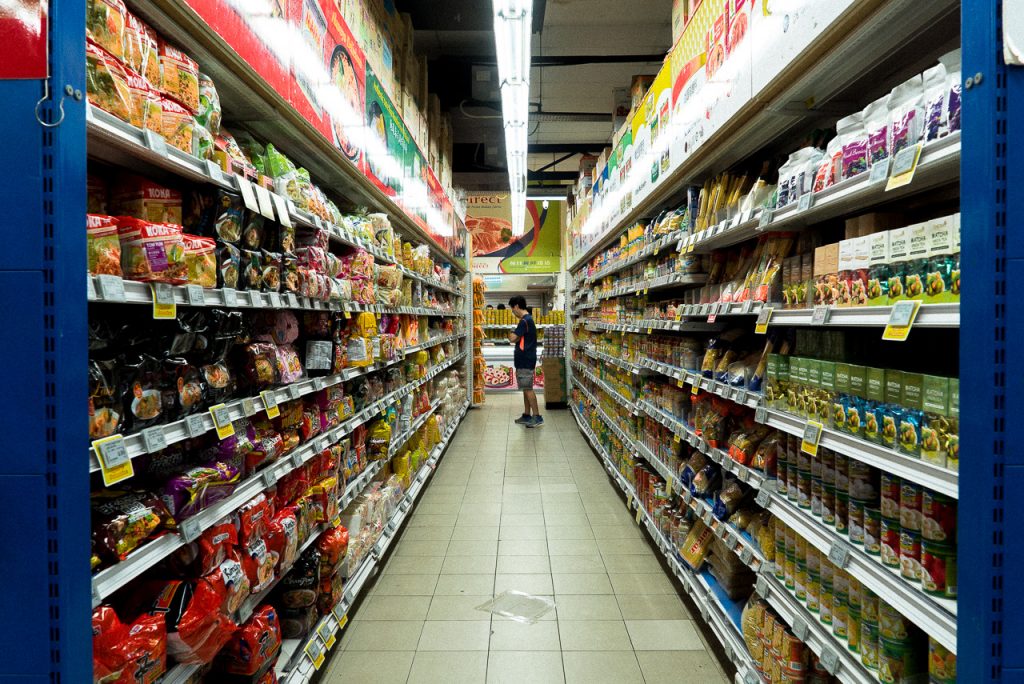
From what I’ve observed, I’m not alone.
Finding pleasure in wandering the supermarket seems to be an unusually common emotional experience. Even in the age of online grocery shopping, where RedMart will send 10 pints of ice cream to your door free of judgement, I’ve rarely, if ever, met a person who didn’t perk up at the mention of a trip to the supermarket. Exploring the supermarket in other countries is practically a tourist activity in and of itself, and a friend once even mentioned that a new colleague introduced herself by saying, “I like to go grocery shopping.”
To be clear, what I am talking about here is not Purposeful Supermarket Shopping, the kind where you enter with an actual shopping list of things you actually need, like instant coffee and toilet paper. Purposeful Supermarket Shopping is focused and transactional. You enter, get what you came for, and leave, like the most mercenary kind of speed dating. Purposeful Supermarket Shopping is done by people with better things to do.
Rather, I am talking about Spontaneous Non-Purposeful Supermarket Shopping—the kind that you need ample amounts of time and a high tolerance for time-wasting to excel at.
Spontaneous Non-Purposeful Supermarket Shoppers can be instantly identified by our lack of a shopping basket and our trademark method of exploration, which is to drift from aisle to aisle like stoned butterflies. We tend to travel alone or in pairs. We are often young because parents buying groceries for a family of five generally do not have 15 minutes to spend just looking at pasta.
Crucially, as the name suggests, it is an open-ended activity. You can leave a round of Spontaneous Non-Purposeful Supermarket Shopping with nothing, or with an armful of things you don’t remember picking up, and a whole lot of guilt.
Finally, Spontaneous Non-Purposeful Supermarket Shopping is almost always confined to the food aisles. Apparently, there just isn’t a similar joy to be found in staring at fabric softener.
That being said, I do think the roots of this phenomenon run deeper than our national obsession with food. If they didn’t, we would be similarly devoted to browsing our wet markets, or the mazes of food stalls in shopping mall basements.
What, then, lies behind the gravitational pull of the supermarket?
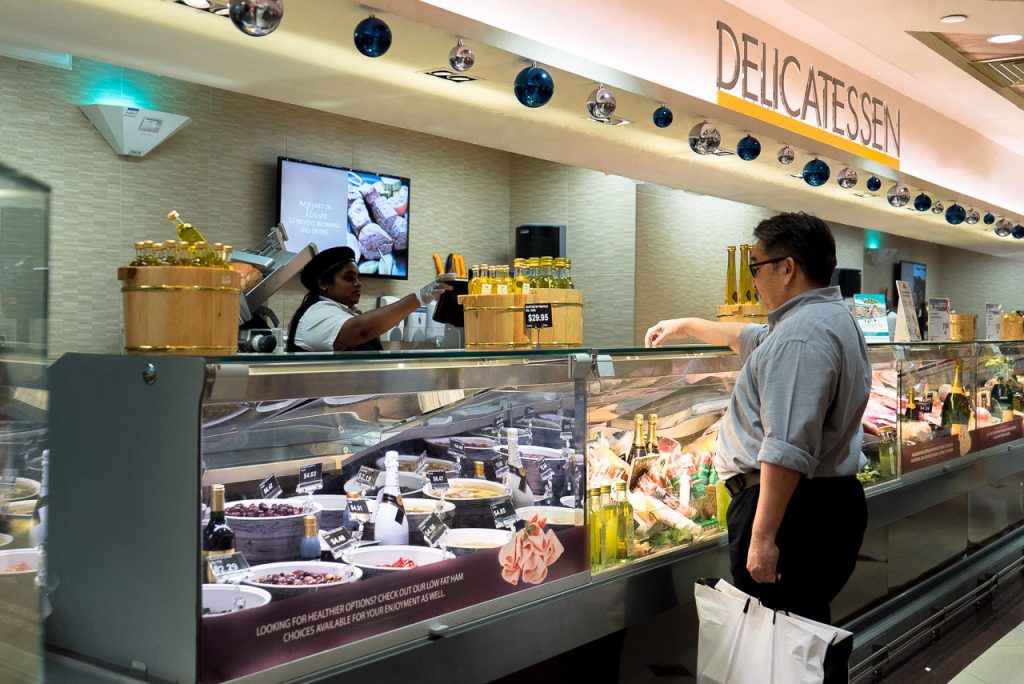
Here, reader, are a few theories.
First, Spontaneous Non-Purposeful Supermarket Shopping is the perfect activity for anyone with a short attention span, a high level of responsiveness to visual stimuli, and a brain that is hard-wired to crave instant reward. In other words, the majority of human beings.
One friend summed it up as such: “It’s a discovery process that almost always promises instant gratification without a need for commitment.”
Spontaneous Non-Purposeful Supermarket Shopping is the physical, three-dimensional equivalent of the infinite social media scroll, from the endless competition for our attention down to the potential for losing vast amounts of time. You can participate as passively as you want (gazing lovingly at a chiller of chocolate milk) or as actively (feeling the satisfying weight of a jug of chocolate milk in your arms as you walk to the cashier), depending on how disciplined you’re feeling.
Similarly, you don’t even have to try to be engaged. Much has been written about supermarket psychology, which is a specialist field of marketing in and of itself. Supermarkets are businesses, after all, and it’s in their owners’ interests to make us spend as much time and money as possible.
The result is a carefully structured capitalist palace, every part of which has been designed for maximum effectiveness in separating you from your money. The essentials—things like rice, cooking oil and soya sauce—go in the middle, so you have to walk past all the fun stuff, like the sushi counter and the offers, to get to them. Treats go near the cashier (in case your resolve needs that final nudge), and the best-sellers just below eye level or at the ends of aisles, where they draw the most eyeballs.
Either way, whether by accident or by design, you’re bound to find something that catches your eye. And each time you do, the curious, pleasure-seeking parts of your brain light up like a Christmas tree, and the cycle begins again.
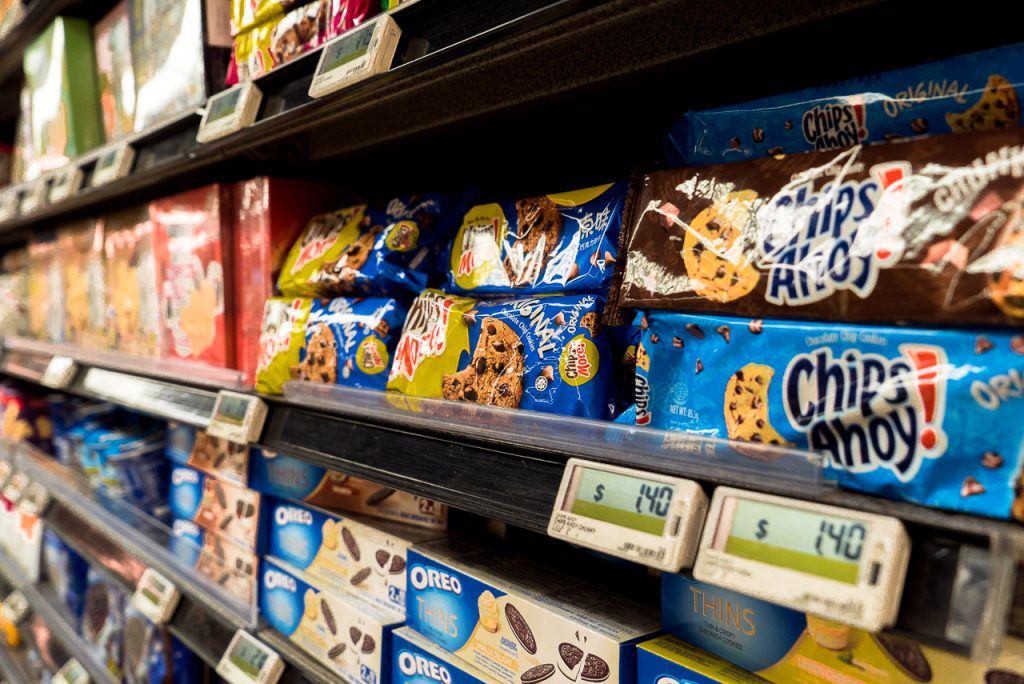
Second, Spontaneous Non-Purposeful Supermarket Shopping is so addictive because it’s therapeutic.
As contained, tightly structured spaces, supermarket aisles are built for mindless roaming. As a Spontaneous Non-Purposeful Supermarket Shopper with nothing in particular to buy, you don’t have to decide where you want to go next, in the way you might if you were wandering a mall. You simply follow the aisles, up and down and down and up, and let them lead you where they will. Before you know it, you’ve walked from the vegetables to the baking aisle to baby food and back again.
I’ve never spent more than 30 minutes on a treadmill in my life, but I have spent three times that roaming NTUC in one sitting. By the end of this, all my nervous energy has either been spent, or I have been soothed into calmness by the repetitive physical activity.
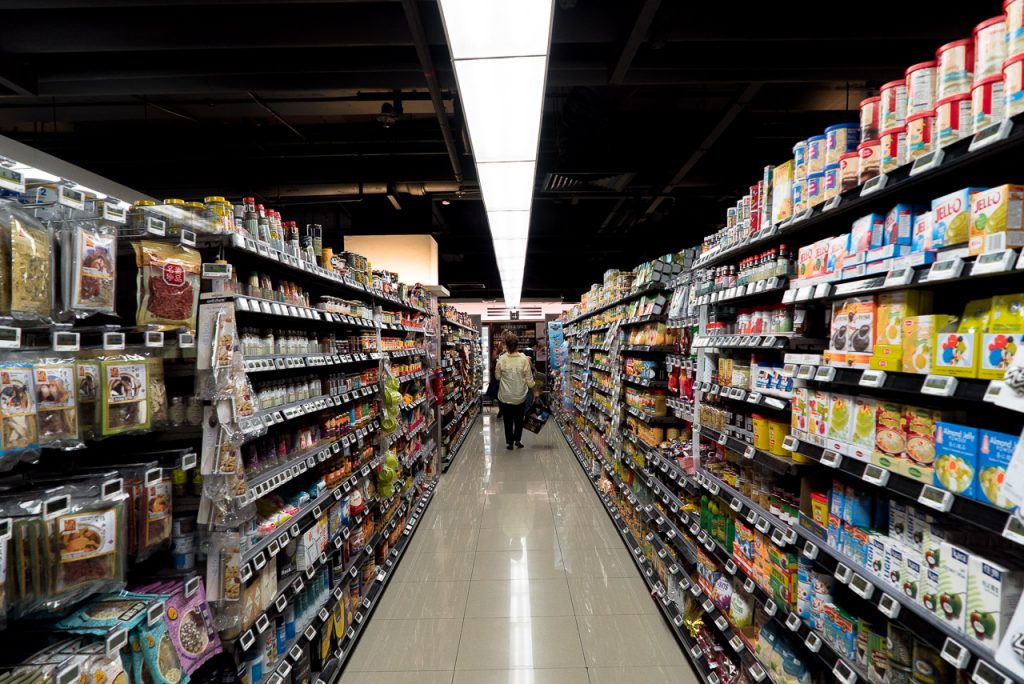
Compounding this is the supermarket’s sheer aesthetic perfection.
Think about it. Row upon row of cereal boxes, evenly spaced and of exactly the same width and height. The mosaic of juice cartons in the chiller and the verdant green of the vegetable aisle, where every head of broccoli is the same deep hue and every bunch of spinach pleasingly lush. Ham slices that are all perfectly round, every chicken breast teardrop-shaped, glossy tomatoes lined up six to a packet.
Contemplating all this induces a visceral satisfaction, not dissimilar to the kind one gets from watching ASMR cake-decorating videos or admiring pages of beautiful handwriting. The supermarket might be unnaturally immaculate, but it’s precisely this artifice that makes it so soothing.
Between their obsessively controlled layout and their orderliness, the supermarket is a haven from the messiness of the outside world. In this, Spontaneous Non-Purposeful Supermarket Shopping is just a long-winded name for escapism: When things feel a bit too chaotic, it’s easy to seek refuge in the aisles, where everything is neat, orderly, visually appealing, and symmetrical, in a way real life never is.
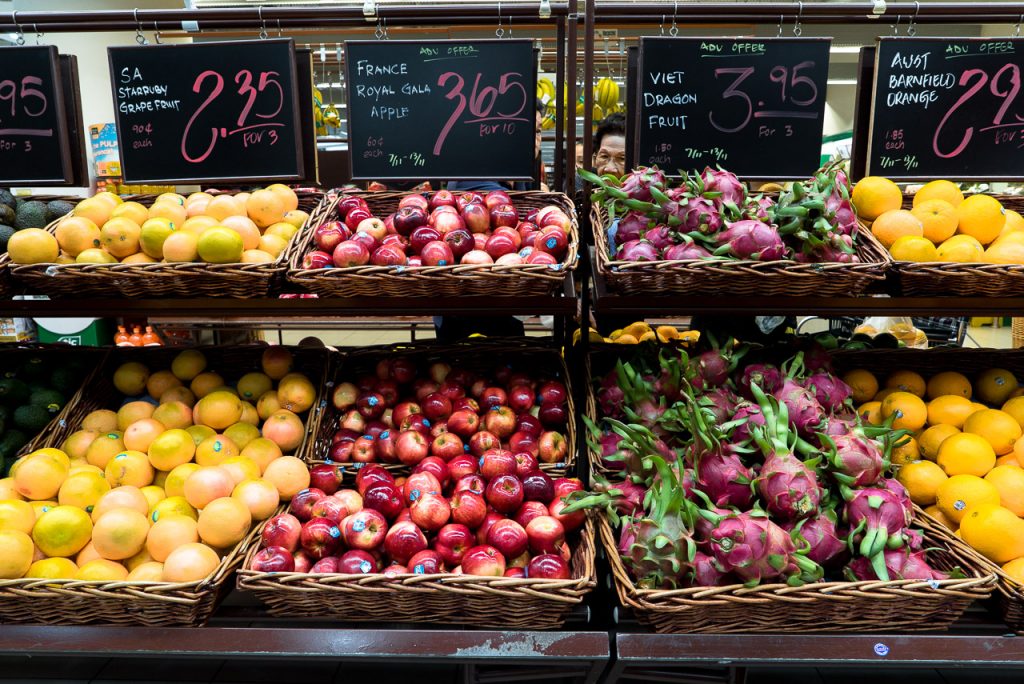
Lastly, and perhaps most crucially: Spontaneous Non-Purposeful Supermarket Shopping can be deeply aspirational.
As another friend put it: “My goal in life is to be the kind of person who does all her shopping at Cold Storage.”
I cracked up when she said it. But I knew exactly what she meant.
Exploring the supermarket often straddles a fine line between fascination and lust. These feelings are most potent when examining foods that are novel or exotic, and though price is no guarantee of quality, it bears saying that the most interesting-sounding products often speak to lifestyles most of us can’t afford, yet secretly wish we could.
As in: look at these perfect yellow carrots and perfect purple cauliflowers and perfect white eggplants, which would make a gorgeous salad except that whole meals can cost less than these babies. Look at these adorable $5 mini pots of Greek yoghurt, which I enjoy with those luscious Spanish figs and a drizzle of aged balsamic vinegar in some alternate universe where I am a woman with my life together. Wouldn’t I love to have a kitchen stocked with five different kinds of rice and jugs of Hokkaido milk and bottles of passionfruit-mango kombucha? Of course I would! Wouldn’t you?

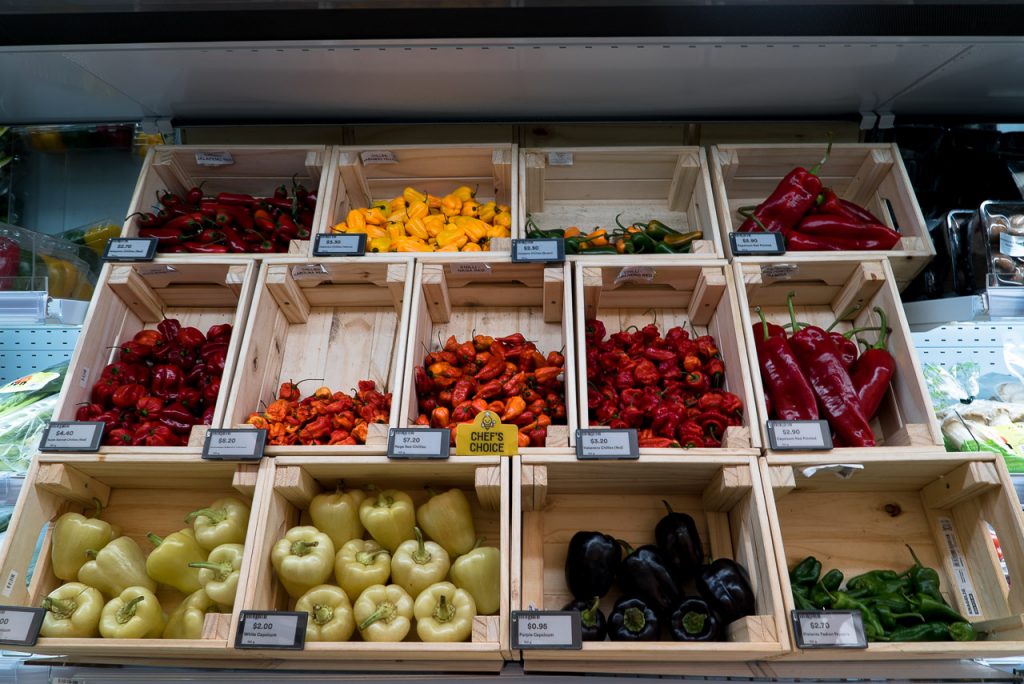

Like the clothes we wear or the music we listen to, what we eat can, consciously or not, reflect who we are: Our tastes and our means, our preferences and our desires.
Spontaneous Non-Purposeful Supermarket Shopping is so popular because it enables us to indulge in fantasies of the people we wish we could be—earning enough to be accustomed to such things, and worldly and well-travelled enough to know what to do with them. I might be looking at a shelf of condiments or a basket of broccoli, but what I’m really seeing is some other, better version of myself, one who has the time, skill, and money to be making elaborate food porn on the regular.
As ways to kill time go, it’s definitely not one of the more productive. But a bit of wishful thinking every now and then never hurt anyone.
And if I don’t become the lady with a fridge full of kombucha, you know where to find me—spontaneously non-purposefully roaming the aisles, cradling a hunk of cheese.
Window shopping in supermarkets aside, what is something you do that you think is amazing but that no one else knows about? Tell us at community@ricemedia.co.



